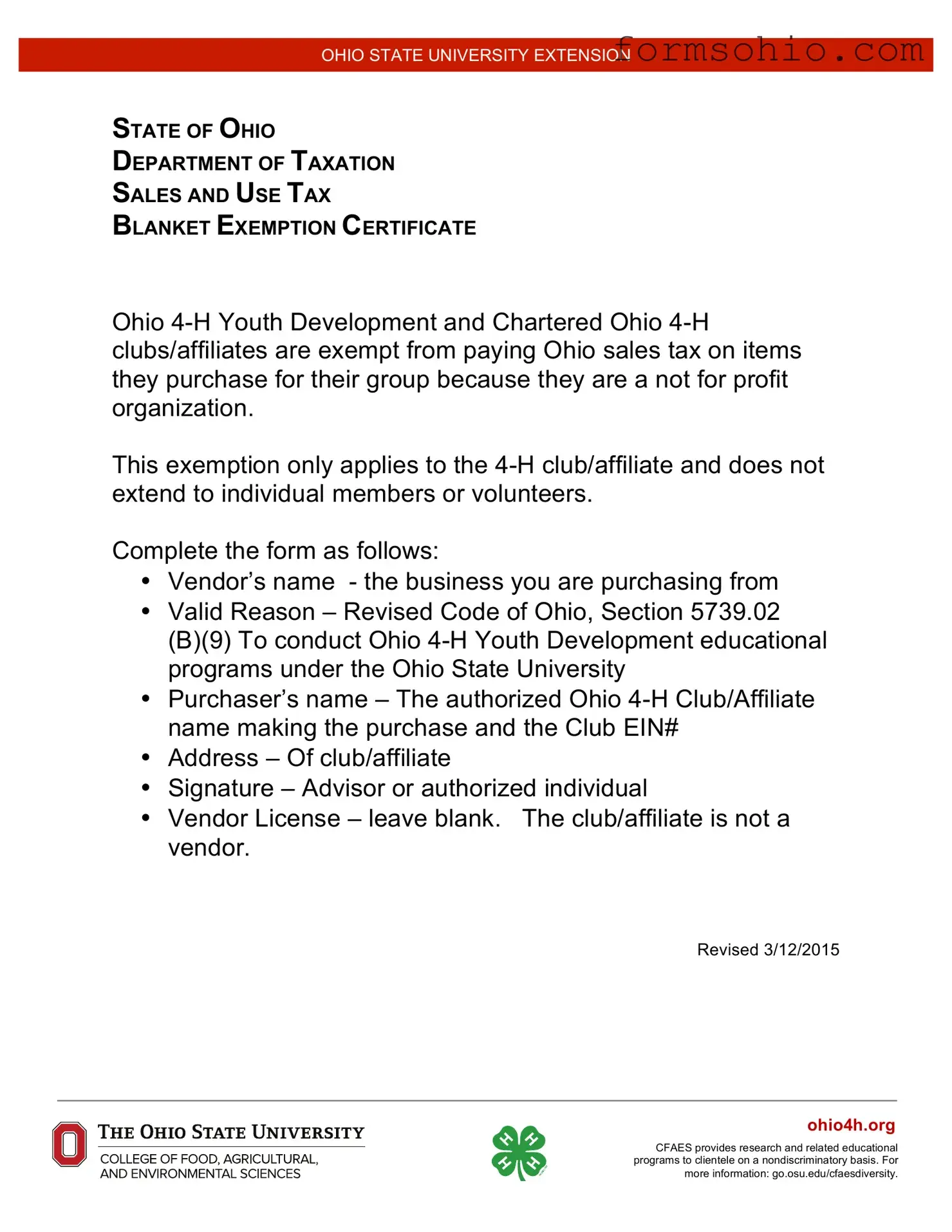Filling out the Tax Exempt Ohio form can seem straightforward, but many people make common mistakes that can lead to complications. One frequent error is failing to provide a valid reason for claiming the exemption. The form specifically requires purchasers to state why they are eligible for the exemption. Without this information, the form may be deemed incomplete, leading to potential issues during audits or transactions.
Another common mistake is neglecting to include the purchaser’s name and type of business. This information is crucial for verifying the legitimacy of the claim. If these details are missing, vendors may reject the exemption, resulting in unexpected tax liabilities for the purchaser.
Additionally, many individuals overlook the importance of providing a complete address. The form requires a street address, city, state, and ZIP code. Omitting any part of this information can lead to delays or denials in processing the exemption. It is essential to double-check that all address components are accurately filled out.
Signatures are another area where mistakes frequently occur. Some people forget to sign the form or fail to include their title. The signature serves as a declaration of the information's accuracy and the authority of the individual completing the form. Without it, the document may be considered invalid.
Purchasers sometimes also misinterpret the rules regarding vendor license numbers. While it’s not mandatory for all vendors, those dealing with specific items like motor vehicles or titled watercraft must include their vendor's license number. Failing to do so can result in the form being rejected for those particular purchases.
Another common oversight is misunderstanding the limitations of the exemption. For instance, construction contractors cannot use this certificate for purchasing materials intended for incorporation into real property. Many mistakenly believe they can claim exemptions for all types of purchases, leading to compliance issues with the Administrative Code.
It's also important to remember that the form is not a blanket exemption for all purchases. Some individuals fill out the form without recognizing that it only applies to specific types of tangible personal property and selected services. This misunderstanding can lead to improper use of the certificate and potential penalties.
Lastly, people often fail to keep a copy of the completed form for their records. Having a copy can be beneficial for future reference and can serve as proof of the exemption claim if any questions arise later. Keeping good records is a best practice that can save time and trouble down the line.
By being aware of these common mistakes, individuals can navigate the process of filling out the Tax Exempt Ohio form more effectively. Careful attention to detail can help ensure that the form is completed correctly, leading to smoother transactions and compliance with tax regulations.


